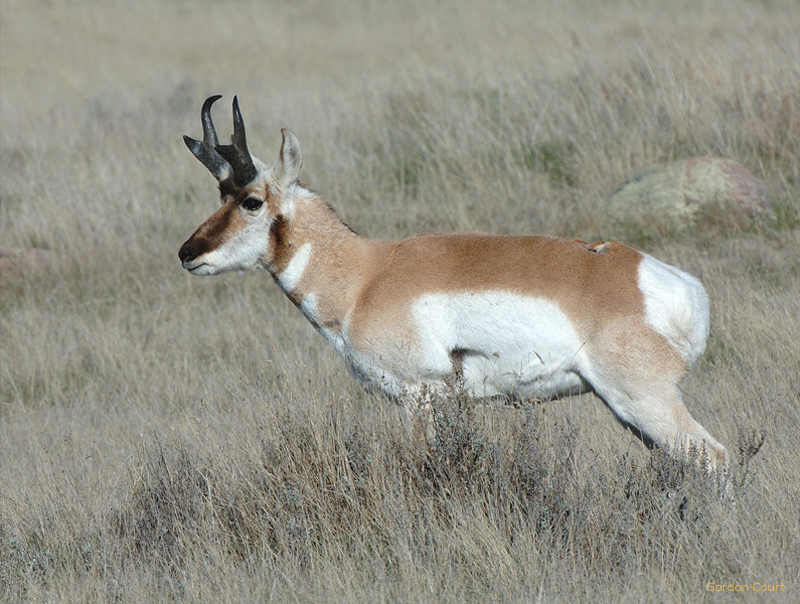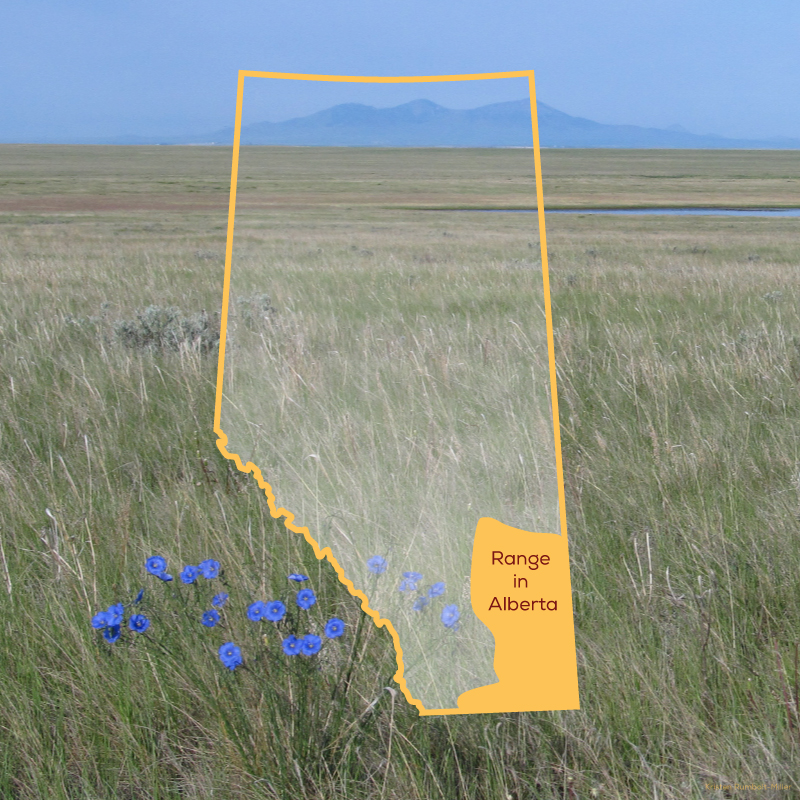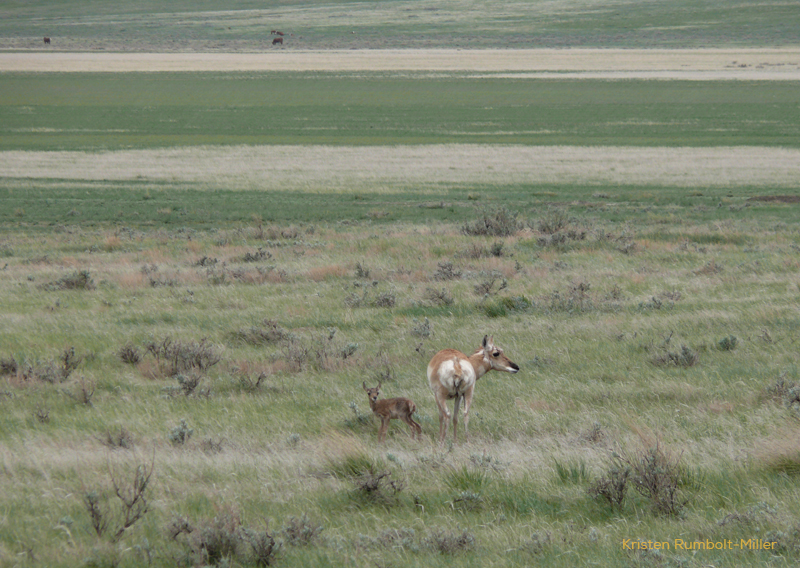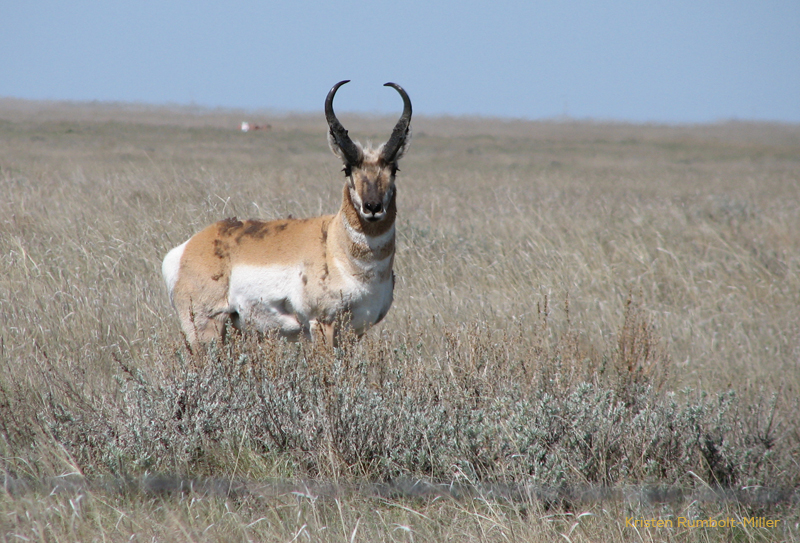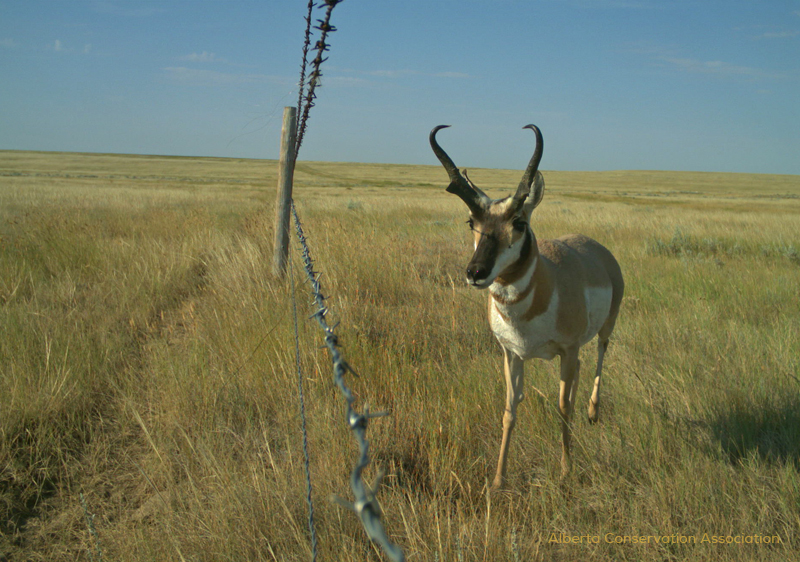PRONGHORN
Antilocapra americana
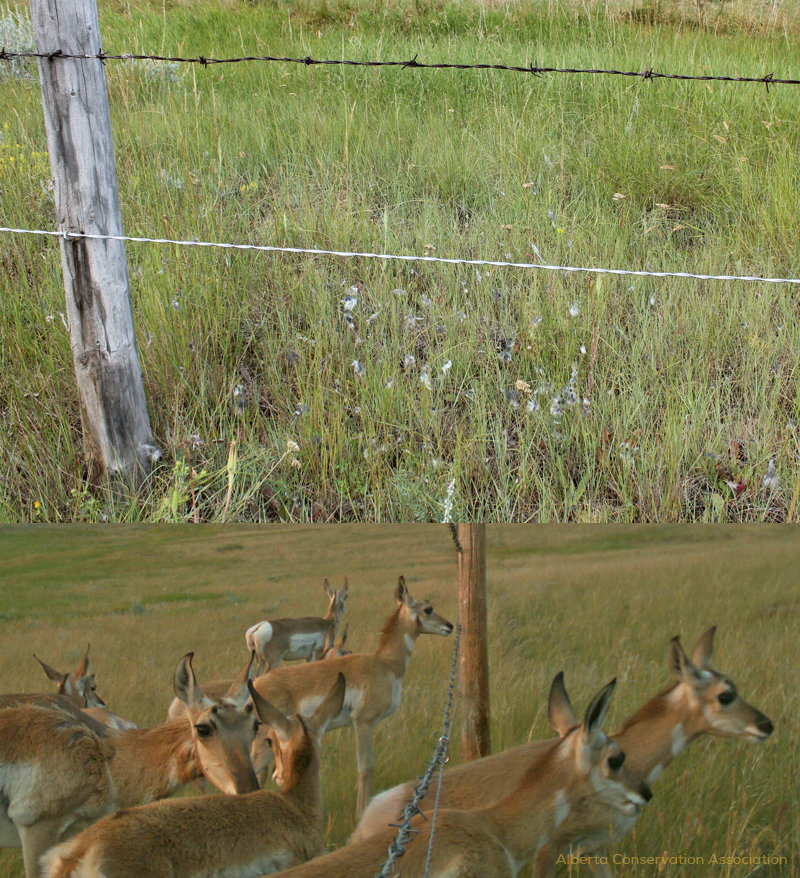 Family Tree
Family Tree
While the Pronghorn’s Latin name, Antilocapra, means “goat-antelope”, they are not related to goats or antelopes. In fact, their closest living relative is the giraffe!
Fleet of Foot
Pronghorns are thought to be the second fastest animal in the world (second only to the Cheetah) and have been clocked at speeds of up to 86 km/hour. Cheetahs once roamed the plains of North America and this is why Pronghorns have evolved to run so fast.
Horns
As their name suggests, Pronghorns have horns, not antlers. Both males and females can have horns, although female horns are smaller, if present. Males shed their horn sheaths once a year in late fall or early winter.
Under the Wire
Built for speed, Pronghorns evolved in wide open landscapes and they tend not to jump. This presents a problem because of the many barbed wire fences crisscrossing their habitat. Instead of jumping over them, they crawl underneath. Pronghorns need 45 cm (18 in) of clearance in order to get under fences and follow their natural migration routes. In Alberta, a large-scale project is working towards replacing the bottom barbed wire with double-stranded smooth wire at the appropriate height.
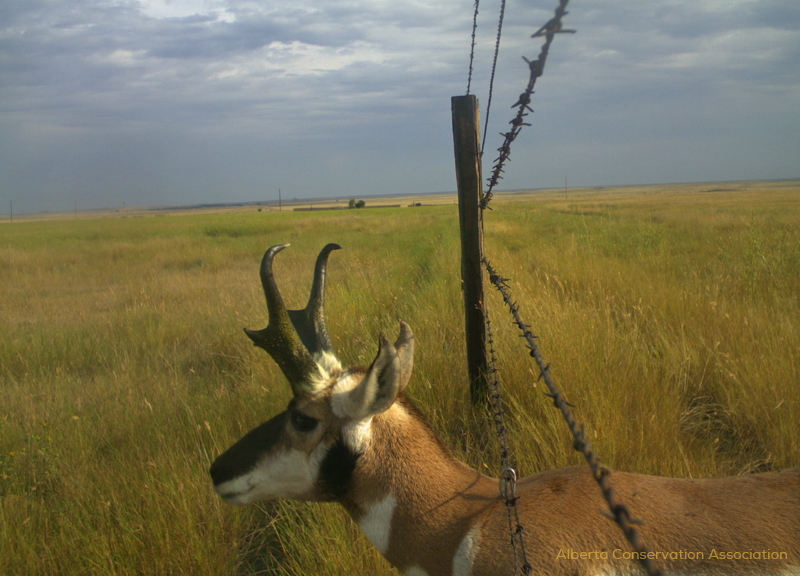 Population
Population
The most dramatic population change occurred in the late 1800s and early 1900s when Pronghorn numbers crashed from many tens of thousands to a mere 1,000 in 1907. This was a result of over-hunting and severe winters. Intensive conservation efforts helped to reverse the situation. The current Alberta population is estimated at around 15,000-20,000 animals.
Current Threats
- Severe winters and severe droughts are very hard on Pronghorn populations.
- Habitat loss due to cultivation and other developments, as well as habitat degradation caused by industrial activities.
- Inappropriate fencing that gets in the way of the natural migration of Pronghorn herds and can tangle and injure individuals.
- Collisions with vehicles on highways and railroads.
Species@Risk Quiz
Test your knowledge about Alberta’s grassland species at risk
Pronghorn
Question 1 |
Pronghorns are most closely related to:
African antelope | |
Deer | |
Goats | |
Giraffes |
Question 2 |
Baby Pronghorns are called:
Fawns | |
Kittens | |
Kids |
Question 3 |
The Pronghorn diet includes:
Cactus | |
Sagebrush | |
Winterfat | |
All of the above |
Question 4 |
For Pronghorns to be able to cross them, fences must:
Be no taller than 1m | |
Have 45 cm of clearance underneath them | |
Run parallel to highways |
Public
- Volunteer with local fish and game groups to retrofit fences with a bottom double-stranded smooth wire at appropriate height.
- Support native grassland habitat by choosing grass-fed meat in the grocery store.
- Voice your support for native grassland conservation with your political leaders.
- Educate yourselves and your family about Pronghorns and their role in the grassland ecosystem.
Landowners
- Hang on to your native grasslands and keep them healthy.
- Maintain sagebrush communities.
- Install wildlife-friendly fencing that allows for Pronghorn movement.
- Minimize the use of east-west cross-fences wherever possible.
- Consult with a biologist to see what other land management or habitat improvements could benefit Pronghorns on your land.
- Talk to your children and neighbours about the privilege of having Pronghorns on your land.
What MULTISAR Does
- Works with landowners to install wildlife-friendly fencing that allows for Pronghorn movement.
- Cooperates with landowners to restore cropland to native grassland at appropriate locations.
- Provides information about Pronghorns and their habitat and recommendations for management practices compatible with Pronghorn needs.
- Collects sagebrush seeds and plants on suitable sites to increase sagebrush communities.
